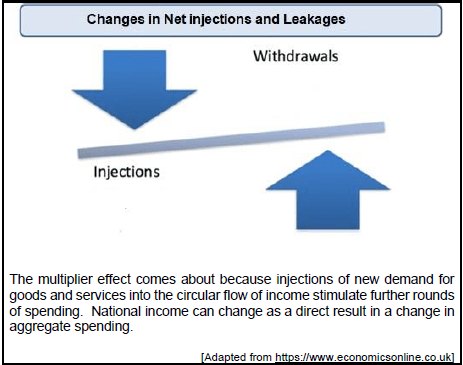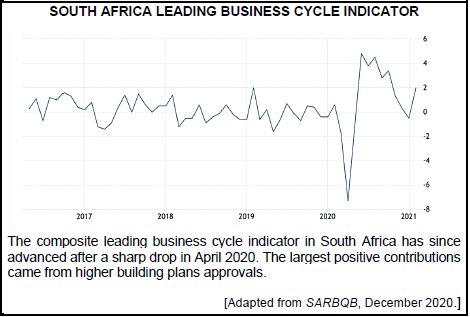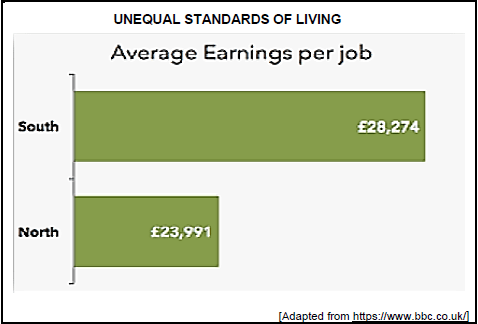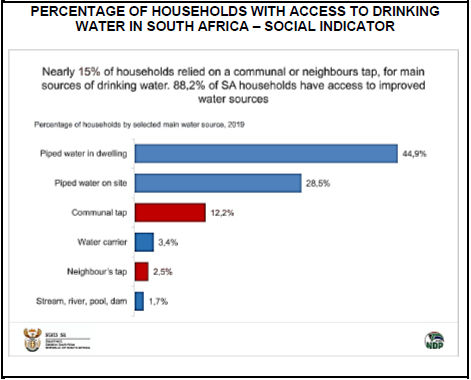Economics Paper 1 Questions - Grade 12 September 2021 Preparatory Exams
Share via Whatsapp Join our WhatsApp Group Join our Telegram GroupINSTRUCTIONS AND INFORMATION
- Answer FOUR questions as follows in the ANSWER BOOK:
SECTION A: COMPULSORY
SECTION B: Answer any TWO of the three questions
SECTION C: Answer ONE of the two questions - Answer only the required number of questions. Answers in excess of the required number will NOT be marked.
- Number the answers correctly according to the numbering system used in this question paper.
- Write the question number above each answer.
- Read the questions carefully.
- Start EACH question on a NEW page.
- Leave 2–3 lines between subsections of questions.
- Answer the questions in full sentences and ensure that the format, content and context of your responses comply with the cognitive requirements of the questions.
- Use only black or blue ink.
- You may use a non-programmable pocket calculator.
- Write neatly and legibly.
QUESTIONS
SECTION A (COMPULSORY) 30 MARKS – 20 MINUTES
QUESTION 1
1.1 Various options are provided as possible answers to the following questions. Choose the answer and write only the letter (A–D) next to the question numbers (1.1.1–1.1.8) in the ANSWER BOOK, for example 1.1.9 D.
1.1.1 The severity of a phase of the business cycle is measured by the …
- trough.
- amplitude.
- extrapolation.
- trend.
1.1.2 Labour can be bought and sold in the … market.
- factor
- goods
- financial
- consumer
1.1.3 When import taxes are imposed as a percentage of the value of the imported goods, it is known as … tariffs.
- composite
- specific
- ad valorem
- average
1.1.4 If the exchange rate changed from $1 = R6 to $1 = R8, due to market forces, then …
- the $ depreciated against the R.
- the R depreciated against the $.
- the R devalued against the $.
- the $ devalued against the R.
1.1.5 Social grants to the citizens of South Africa forms part of the … policy.
- monetary
- trade
- growth
- fiscal
1.1.6 The process of transforming a mineral to a higher value product, which can be consumed locally or exported, is known as…
- gateways.
- driveways.
- export processing zones.
- beneficiation
1.1.7 The inflation target set by the South African government, is …
- 1 – 6%.
- 6 – 12%.
- 3 – 6%.
- 0 – 3%.
1.1.8 An international organisation that requires its members to standardise their indicators, is called the …
- World Bank.
- Government Financial Statistics.
- World Economic Forum.
- Human Development Index. (8 x 2) (16)
1.2 Choose a description from COLUMN B that matches an item in COLUMN A. Write only the letter (A–I) next to the question numbers (1.2.1 to 1.2.8) in the ANSWER BOOK.
COLUMN A | COLUMN B | ||
1.2.1 | Trade balance | A | embedded in demand and supply side policies |
1.2.2 | Free trade | B | increase potential for large scale production |
1.2.3 | Real flow | C | producers and consumers can buy goods and services from anywhere in the world without the interference of government |
1.2.4 | New economic paradigm | D | shows relationship between tax rates and tax revenue |
1.2.5 | Laffer curve | E | the return of land to those who lost it because of discriminatory laws |
1.2.6 | National Industrial Policy Framework (NIPF) | F | the difference between what a country exports, including gold, and what it imports |
1.2.7 | Land restitution | G | measured by dividing the real GDP by the number of workers employed |
1.2.8 | Labour productivity | H | the movement of goods, services and factors of production among the participants in the economy |
I | reflects all transactions between one country and another | ||
(8 x 1) (8)
1.3 Give ONE term for each of the following descriptions. Write only the term next to the question numbers (1.3.1 to 1.3.6) in the ANSWER BOOK. Abbreviations, acronyms and examples will NOT be accepted.
1.3.1 Continuous flow of spending, production and income between different sectors
1.3.2 A negative economic growth for at least two successive quarters
1.3.3 Transfer of functions and ownership of entities from the private sector to the public sector
1.3.4 The worldwide interaction of economies with trade as an important element
1.3.5 Initiated to attract infrastructure and business investments to neglected and underdeveloped areas
1.3.6 All persons of either gender between the ages of 15 and 65 who supply labour for productive activities (6 x 1) (6)
TOTAL SECTION A: 30
SECTION B
QUESTION 2: MACROECONOMICS 40 MARKS – 30 MINUTES
2.1 Answer the following questions.
2.1.1 Name any TWO problems of public sector provisioning (2 x 1) (2)
2.1.2 Why is borrowing not a long-term solution for a fundamental BOP disequilibrium? (1 x 2) (2)
2.2 Study the information below and answer the questions that follow.
2.2.1 Name ONE example of an injection. (1)
2.2.2 Give the formula to calculate aggregate expenditure in an open economy. (1)
2.2.3 Briefly describe the term injection. (2)
2.2.4 What is the effect on national income if injections are less than withdrawals? (2)
2.2.5 Suppose the expenditure function ( E ) = 10 + 0.5Y. Draw a clearly labelled 45° diagram to show the expenditure function. (4)
2.3 Study the information below and answer the questions that follow.
2.3.1 Give an example of a leading indicator. (1)
2.3.2 Indicate the phase of a business cycle that has the highest unemployment rate. (1)
2.3.3 Briefly describe the term business cycle. (2)
2.3.4 Explain the Keynesian approach of business cycles. (2)
2.3.5 How can the South African Reserve Bank prevent the economy from reaching a trough? (4)
2.4 Draw a fully labelled graph to show the relationship between inflation and unemployment. (8)
2.5 Assess the limitations of comparative advantage theory for countries involved in international trade. (8)
[40]
QUESTION 3: ECONOMIC PURSUITS 40 MARKS – 30 MINUTES
3.1 Answer the following questions.
3.1.1 Name any TWO indicators relating to money supply. (2 x 1) (2)
3.1.2 How does education help in social development? (1 x 2) (2)
3.2 Study the information below and answer the questions that follow.

3.2.1 Give a formula to calculate per capita income. (1)
3.2.2 Identify the side where longer life expectancy is experienced. (1)
3.2.3 Briefly describe the term North-South divide. (2)
3.2.4 Compare the poverty levels of the North and South countries. (2)
3.2.5 How do countries in the ‘south’ negatively affect the environment? (4)
3.3 Study the table below and answer the questions that follow.
3.3.1 Identify an indicator related to interest rates. (1)
3.3.2 Name the type of exchange rate system used in South Africa. (1)
3.3.3 Briefly describe the term prime rate. (2)
3.3.4 Why is it important for the government to assess the performance of the economy? (2)
3.3.5 How can an increase in repo rate affect consumption expenditure? (4)
3.4 Discuss tariffs and quotas as methods of import substitution. (8)
3.5 How can the Expanded Public Work Programme be used to reduce the unemployment rate? (8)
[40]
QUESTION 4: MACRO ECONOMICS AND ECONOMIC PURSUITS 40 MARKS – 30 MINUTES
4.1 Answer the following questions.
4.1.1 Name any TWO incentives used by the SA government to improve industrial development. (2 x 1) (2)
4.1.2 How can a country improve the terms of trade? (1 x 2) (2)
4.2 Study the table below and answer the questions that follow:
NATIONAL ACCOUNT AGGREGATES | |
SOUTH AFRICA’S GROSS DOMESTIC PRODUCT 2019 | R millions |
Compensation of employees | 2 418 544 |
Net operating surplus | 1 296 696 |
Consumption of fixed capital | 713 078 |
Gross value added at factor cost | 4 428 317 |
Other taxes on production | 105 061 |
Other subsidies on production | 9 798 |
Gross value added at basic prices | A |
Taxes on products | 554 866 |
Subsidies on products | 10 821 |
Gross domestic product at market prices | 5 077 625 |
[Adapted from SARB Quarterly Bulletin, December 2020]
4.2.1 Give ONE example of taxes on products. (1)
4.2.2 Identify the method used to calculate Gross Domestic Product. (1)
4.2.3 Briefly describe the term consumption of fixed capital. (2)
4.2.4 Determine the value of A above. (2)
4.2.5 Why does the government provide subsidies on products? (4)
4.3 Study the information below and answer the questions that follow.
[Adapted from This email address is being protected from spambots. You need JavaScript enabled to view it.]
4.3.1 Give any other example of a basic service. (1)
4.3.2 Indicate the percentage of South African households who do not have access to improved water sources. (1)
4.3.3 Briefly describe the term social indicator. (2)
4.3.4 What measures can be used to ensure sufficient water supplies in South Africa? (2)
4.3.5 How successful has the South African government been in rendering services as a social indicator? (4)
4.4 Briefly discuss prevention of dumping and protection of natural resources as arguments in favour of protectionism. (8)
4.5 How can the Reserve Bank effectively reduce the deficit on the balance of payments? (8)
[40]
TOTAL SECTION B: 80
SECTION C
Answer any ONE question of the TWO questions in the ANSWER BOOK.
Your answer will be assessed as follows:
STRUCTURE OF ESSAY | MARK ALLOCATION |
Introduction
| Max. 2 |
Body | Max. 26 Max. 10 |
Conclusion
| Max. 2 |
TOTAL | 40 |
QUESTION 5: MACROECONOMICS 40 MARKS – 40 MINUTES
- Discuss in detail the reason(s) for public sector failure. (26 marks)
- How can inefficiencies contributing to public sector failure be solved? (10 marks)
[40]
QUESTION 6: ECONOMIC PURSUITS 40 MARKS – 40 MINUTES
- Discuss in detail the South Africa’s initiatives in regional development. (26 marks)
- Evaluate the success of South Africa's regional development policies in terms of international benchmarking. (10 marks)
[40]
TOTAL SECTION C: 40
GRAND TOTAL: 150